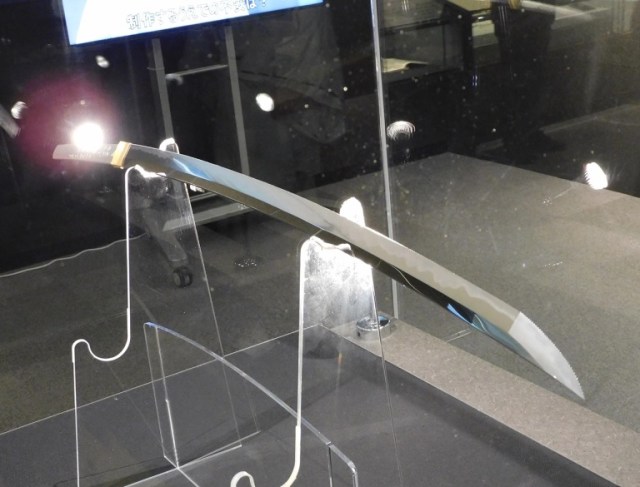
Kenshin vs. Shishio museum exhibit displays Sakabato and Mugenjin.
Within anime/manga Rurouni Kenshin, Himura Kenshin and Shishio Makoto can be considered two sides of the same coin. They’re both supremely skilled swordsmen who worked as assassins for the government, but while protagonist Kenshin’s realization that violence only creates sorrow leads him to vow to never again take a life, Shishio descends further and further into blood-soaked madness.
The pair’s personalities are reflected in their swords, with Kenshin’s Sakabato having what would ordinarily be the katana’s striking edge left dull and unsharpened, while Shishio’s Mugenjin is crafted to kill as efficiently as possible.
Both swords were fictional weapons created for the manga, until a few years ago when Japanese swordsmiths created an actual Sakabato. Now a real-life Mugenjin has been crafted too, and both blades are currently on display in a special museum exhibit.
Titled Kenshin vs. Shishio: Rurouni Kenshin and the World of Japanese Swords, the exhibit is being held in the town of Seki, Gifu Prefecture. During the samurai era, Seki’s smiths earned a reputation for producing some of the finest swords in the country for the warrior class, and even now the city is known for high-class cutlery of non-combat natures.
The venue for the exhibit is the Seki Sword Tradition Museum (Seki Kajidenshokan in Japanese), about a five-minute walk from Sekiterasumae Station on the Etsumi-Nan Line. Signs emblazoned with images of Kenshin and Shishio around town and in front of the museum let you know you’re in the right place.
The exhibition is being held on the second floor, and the first sword you’ll encounter as you come into the room is the Sakabato (逆刃刀), with the Mugenjin (無限刃) behind it.
▼ Officially, the real-life version of Kenshin’s sword is called the Sakabato Shinuchi
(逆刃刀真打), Shinuchi meaning “Truly Forged” in Japanese.
The Sakabato was just as beautiful as it was the last time we saw it. This was our first time to lay eyes on the Mugenjin, though, and it’s a fearsome blade to behold.
From across the room, you might not immediately spot what makes it so suited to Shishio’s merciless nature, but as you get closer…
…you’ll see it has a serrated edge.
Part of what makes katana such compelling works of art is their mix of grace and power. They’re bladed weapons, first and foremost, but their shine and undulated hamon tempering lines give them an almost liquid visual quality. Looking at the Mugenjin, though, there’s a strong intimidating aura, as it’s hard not to imagine the sawtooth edge ripping through its target instead of making a clean cut.
Within the anime, the Mugenjin’s design is said to enable the sword to self-sharpen as it slices so that it never dulls, no matter how many people Shishio cuts down with it. We’re not sure the design would have that effect in the real world, but it’s still an amazingly impressive work of swordsmithing. We asked Fujiwara no Kanafune, one of the craftsmen who helped make the real-life Mugenjin (and the 26th generation of swordsmith to bear that name) how he produced the one-of-a-kind katana edge, but he only told us “That’s a secret.”
By the way, there’s one more Rurouni Kenshin-related sword at the exhibit, which is right next to the character artwork of Saito Hajime.
Saito is yet another swordsman who appears in the series, and on display in the case beside his picture is his sword.
However, this sword wasn’t made because of Rurouni Kenshin. Unlike Kenshin and Shishio, Saito Hajime was an actual historical figure, a samurai who lived in Japan during the Edo period and was a high-ranking member of the Shinsengumi special police force, and on display at the museum is the sword of the real-life Saito, creating a unique mixing of the anime/manga series and actual Japanese history.
The Kenshin vs. Shishio: Rurouni Kenshin and the World of Japanese Swords exhibit is going on now and runs until March 30.
Museum information
Seki Sword Tradition Museum / 関鍛冶伝承館
Address: Gifu-ken, Seki-shi, Minamikasugacho 9-1
岐阜県関市南春日町9-1
Open 9 a.m.-4:30 p.m.
Admission: 500 yen
Exhibition website
Photos © SoraNews24
● Want to hear about SoraNews24’s latest articles as soon as they’re published? Follow us on Facebook and Twitter!
[ Read in Japanese ]

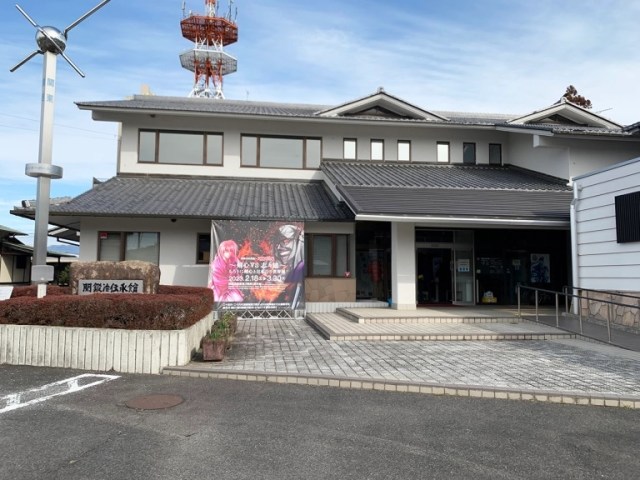
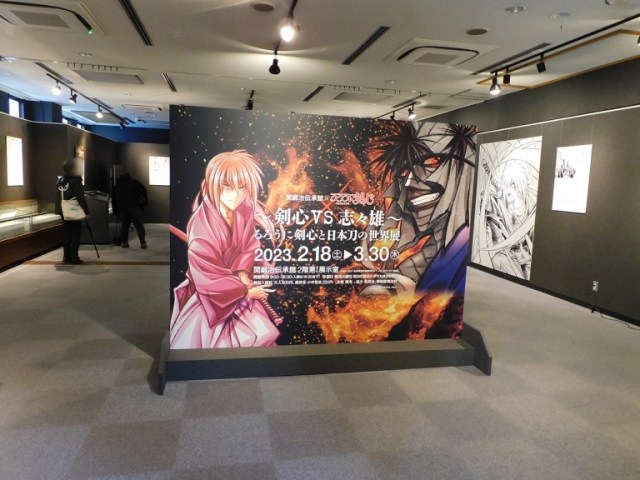
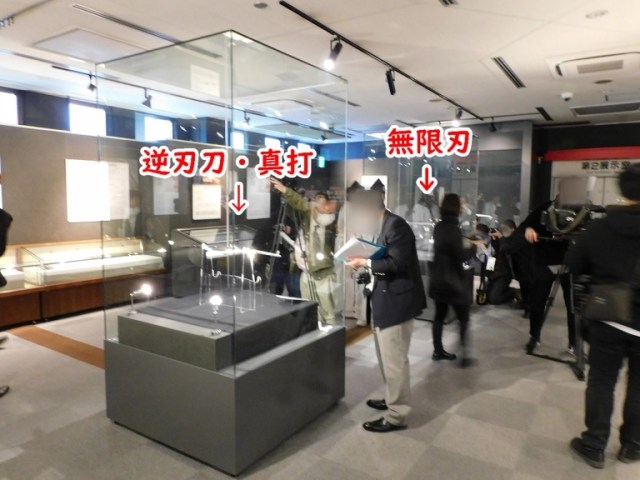
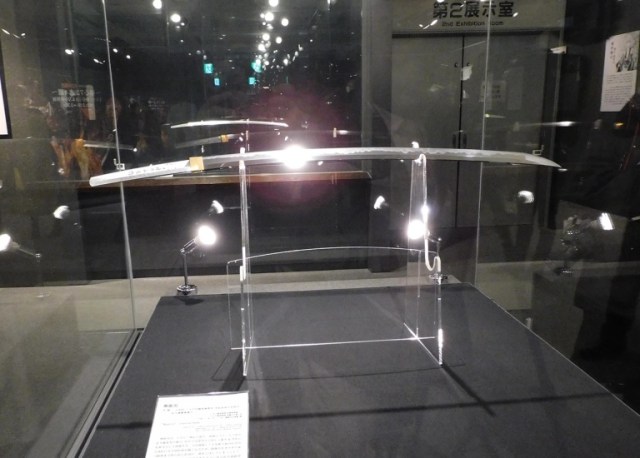
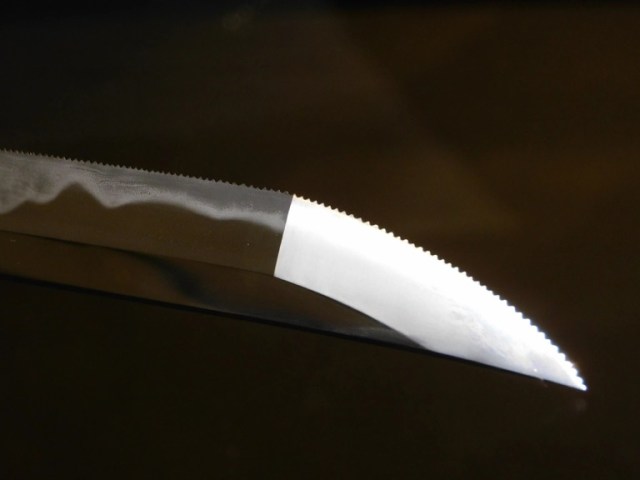
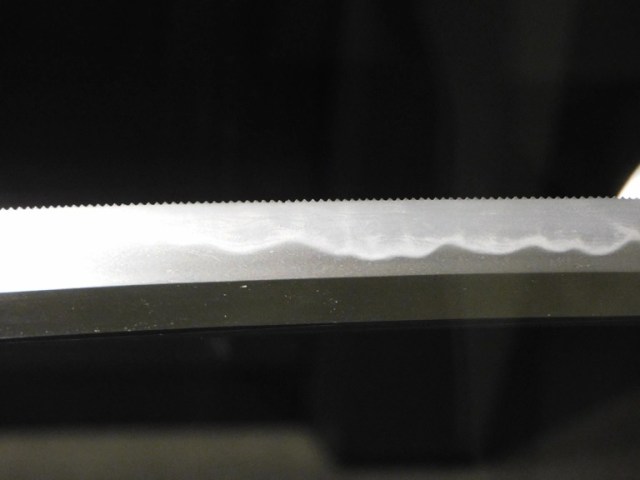
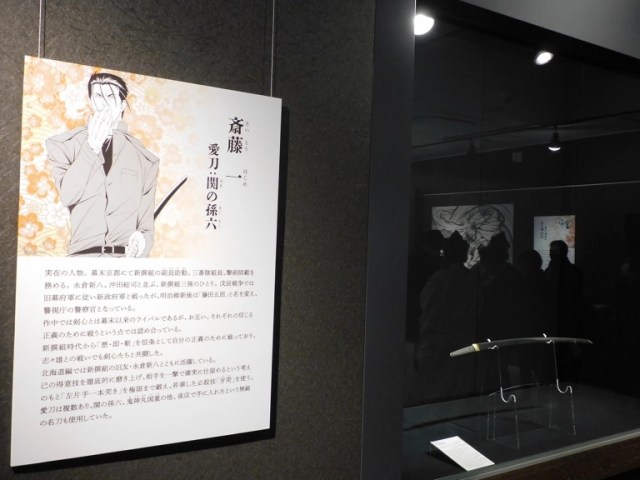
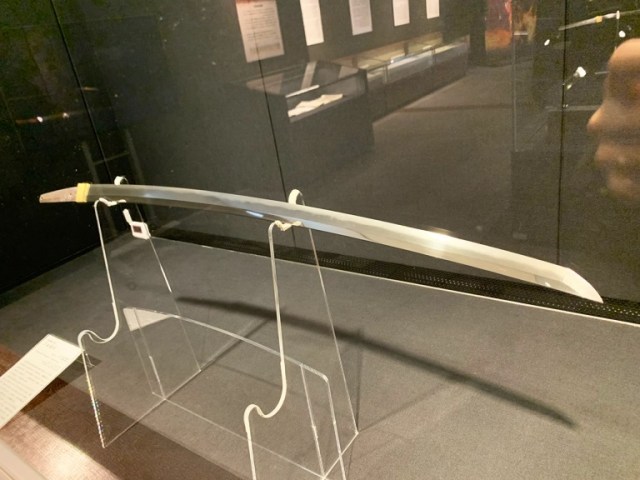
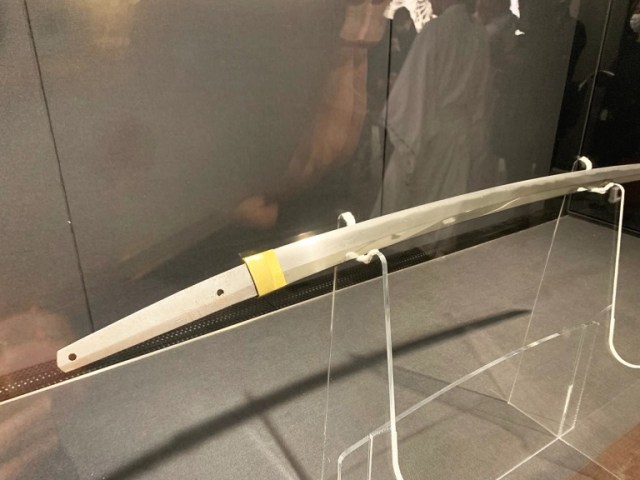
 Real-life Rurouni Kenshin reverse-blade sword to be displayed in Tokyo
Real-life Rurouni Kenshin reverse-blade sword to be displayed in Tokyo Real-life Rurouni Kenshin reverse-blade katana, forged by master swordsmith, now on display【Pics】
Real-life Rurouni Kenshin reverse-blade katana, forged by master swordsmith, now on display【Pics】 Real-life Rurouni Kenshin reverse-blade katana now on display in Tokyo【Photos】
Real-life Rurouni Kenshin reverse-blade katana now on display in Tokyo【Photos】 Rurouni Kenshin sumi-e prints are the most wanted holiday gifts on our wish list
Rurouni Kenshin sumi-e prints are the most wanted holiday gifts on our wish list Swords of famous samurai reborn as beautiful kitchen knives from Japan’s number-one katana town
Swords of famous samurai reborn as beautiful kitchen knives from Japan’s number-one katana town Majority of Japanese mayors say foreign residents are essential but most see good and bad effects
Majority of Japanese mayors say foreign residents are essential but most see good and bad effects Japanese beef bowl chain Sukiya’s 2026 Smile Box lucky bag basically pays for itself
Japanese beef bowl chain Sukiya’s 2026 Smile Box lucky bag basically pays for itself Should you dip your cake in sake? One Japanese brewer says no, but actually yes【 Taste test】
Should you dip your cake in sake? One Japanese brewer says no, but actually yes【 Taste test】 Village Vanguard’s most expensive Black Lucky Bag sets an ominous tone for 2026
Village Vanguard’s most expensive Black Lucky Bag sets an ominous tone for 2026 Disney’s Japanese New Year’s plushies and figures are ready to make oshogatsu cuter than ever
Disney’s Japanese New Year’s plushies and figures are ready to make oshogatsu cuter than ever “Demon manju”: A low-prep recipe for a delicious regional snack made from sweet potato
“Demon manju”: A low-prep recipe for a delicious regional snack made from sweet potato Ramen restaurant in Tokyo offers discount to customers who order ramen with no noodles
Ramen restaurant in Tokyo offers discount to customers who order ramen with no noodles 7-Eleven opens “next generation” SIP convenience store in Japan
7-Eleven opens “next generation” SIP convenience store in Japan We try the sweets, soups, pastas, and fried chicken of KFC’s all-you-can-eat buffet restaurant
We try the sweets, soups, pastas, and fried chicken of KFC’s all-you-can-eat buffet restaurant Sea urchin ramen – Not for the faint of heart!
Sea urchin ramen – Not for the faint of heart! Starbucks Japan ready to get Year of the Horse started with adorable drinkware and plushies【Pics】
Starbucks Japan ready to get Year of the Horse started with adorable drinkware and plushies【Pics】 Hayao Miyazaki says Happy New Year to Studio Ghibli fans with new art for Year of the Horse
Hayao Miyazaki says Happy New Year to Studio Ghibli fans with new art for Year of the Horse 7 great places to see Mt. Fuji from without having to climb it
7 great places to see Mt. Fuji from without having to climb it We found possibly the quietest Japanese-style hotel in Tokyo’s bustling Shinjuku district
We found possibly the quietest Japanese-style hotel in Tokyo’s bustling Shinjuku district Cup Noodle tries an authentic Jiro-style ramen, but something’s not quite right
Cup Noodle tries an authentic Jiro-style ramen, but something’s not quite right Hello Kitty Choco Egg figures are an adorable trip through three periods of Japanese pop culture【Pics】
Hello Kitty Choco Egg figures are an adorable trip through three periods of Japanese pop culture【Pics】 Japan’s oldest largetooth sawfish in captivity back on display in Mie Prefecture
Japan’s oldest largetooth sawfish in captivity back on display in Mie Prefecture Cyberpunk anime meets traditional culture in Ghost in the Shell gold leaf Japanese changing screens
Cyberpunk anime meets traditional culture in Ghost in the Shell gold leaf Japanese changing screens The best Starbucks Japan Frappuccinos we want to drink again in 2026
The best Starbucks Japan Frappuccinos we want to drink again in 2026 We revisited Sweets Paradise after a decade to see if Japan’s dessert buffet still delivers
We revisited Sweets Paradise after a decade to see if Japan’s dessert buffet still delivers 7-Eleven Japan starts new temporary luggage storage service in over 300 branches
7-Eleven Japan starts new temporary luggage storage service in over 300 branches Disillusionment at Tsukiji’s tourist-target prices led us to a great ramen restaurant in Tokyo
Disillusionment at Tsukiji’s tourist-target prices led us to a great ramen restaurant in Tokyo Starbucks teams up with 166-year-old Kyoto doll maker for Year of the Horse decorations【Photos】
Starbucks teams up with 166-year-old Kyoto doll maker for Year of the Horse decorations【Photos】 Tokyo considering law requiring more trash cans following litter increase in heavily touristed area
Tokyo considering law requiring more trash cans following litter increase in heavily touristed area Tokyo’s Tsukiji sushi neighborhood asks tour groups to stay away for the rest of the month
Tokyo’s Tsukiji sushi neighborhood asks tour groups to stay away for the rest of the month Tokyo event lets you travel back in time, for free, to celebrate 100 years since Showa era start
Tokyo event lets you travel back in time, for free, to celebrate 100 years since Showa era start Sanrio theme park in Japan announces plans to expand into a Sanrio resort
Sanrio theme park in Japan announces plans to expand into a Sanrio resort Japan may add Japanese language proficiency, lifestyle classes to permanent foreign resident requirements
Japan may add Japanese language proficiency, lifestyle classes to permanent foreign resident requirements Stamina-destroying “Paralysis Noodles” are Tokyo’s newest over-the-top ramen innovation
Stamina-destroying “Paralysis Noodles” are Tokyo’s newest over-the-top ramen innovation Survey asks foreign tourists what bothered them in Japan, more than half gave same answer
Survey asks foreign tourists what bothered them in Japan, more than half gave same answer Japan’s human washing machines will go on sale to general public, demos to be held in Tokyo
Japan’s human washing machines will go on sale to general public, demos to be held in Tokyo Japan’s deadliest food claims more victims, but why do people keep eating it for New Year’s?
Japan’s deadliest food claims more victims, but why do people keep eating it for New Year’s? We deeply regret going into this tunnel on our walk in the mountains of Japan
We deeply regret going into this tunnel on our walk in the mountains of Japan Studio Ghibli releases Kodama forest spirits from Princess Mononoke to light up your home
Studio Ghibli releases Kodama forest spirits from Princess Mononoke to light up your home Major Japanese hotel chain says reservations via overseas booking sites may not be valid
Major Japanese hotel chain says reservations via overseas booking sites may not be valid Put sesame oil in your coffee? Japanese maker says it’s the best way to start your day【Taste test】
Put sesame oil in your coffee? Japanese maker says it’s the best way to start your day【Taste test】 No more using real katana for tourism activities, Japan’s National Police Agency says
No more using real katana for tourism activities, Japan’s National Police Agency says Starbucks Japan reveals new sakura drinkware collection, inspired by evening cherry blossoms
Starbucks Japan reveals new sakura drinkware collection, inspired by evening cherry blossoms Updated cherry blossom forecast shows extra-long sakura season for Japan this year
Updated cherry blossom forecast shows extra-long sakura season for Japan this year
Leave a Reply